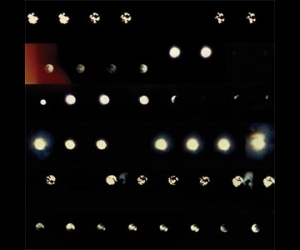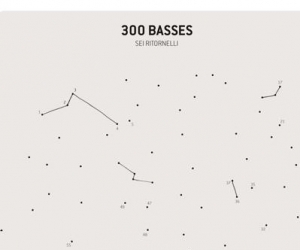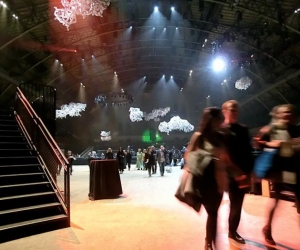
It is commonly known that Iannis Xenakis was more than a composer; that he studied engineering rather than composition; that he worked for Le Corbusier as an architectural assistant; that he taught himself computer programming in order to create composition algorithms, new methods for digital synthesis, and a graphic music computer system (UPIC); that he created multimedia extravaganzas with music, lights, lasers, and more. This book, lovingly and painstakingly compiled and translated by Sharon Kanach, provides us with the first detailed exposure of Xenakis’s activities as an architect.
Some of Xenakis’s writings on architecture have been published before. Those books and articles are not easy to find, however, so collecting them here is very convenient. Even more valuable are the introductions by Ms. Kanach, who provides important context to the work. She has also expended a great deal of effort delving into the Xenakis Archives to find relevant photos, sketches, and letters. Practically every other page of this book contains reproductions of these materials—often in colour (Pendragon Press has to be congratulated as well, for its commitment, and for somehow finding a way to retail this 338-page hardcover book for a very reasonable US $48).
The book is organized into four main sections: 1) The Le Corbusier Years; 2) Writings on Architecture; 3) Independent Architectural Projects; 4) The Polytopes. It also contains four Appendices: A) The UPIC; B) Synoptic Table of Xenakis’ Life and Works; C) Catalogue raisonné of Xenakis’ Architectural Projects; D) Selected Bibliography. There is also a thoughtful Foreword by Toronto architect David J. Lieberman. As a musician, I especially appreciated his concern to emphasize the “performity” of space, the “experiential quality” of architecture. Mr. Lieberman is very aware of the connection between music and architecture, a relationship that sits at the very foundation of Xenakis’ creative work.
While it is well-known that Xenakis worked for Le Corbusier in his early years in Paris, it is interesting to follow here the details of his involvement in various projects from 1947 to 1959, and not just the 1958 Philips Pavilion, for which he is best known. There are many documents included in this section of the book that provide insight into this period of Xenakis’ life, when he was most actively involved in architectural work. As he states later in the book, the decision to devote himself to music, precipitated by his release from employment by Le Corbusier in 1959, was painful, as he very much wanted to continue his architectural research, but was unable to find the necessary ongoing support to do so.
New to this text are descriptions of multimedia projects that Xenakis worked on but that never came to fruition (in Athens and in Mexico). Perhaps most fascinating, though, are the building projects he undertook, primarily for friends and family. These are described in some detail, and photos and design drawings are included. The most ambitious project he undertook was a proposal for the new Cité de la Musique in Paris (the competition was held in 1984). Even though by then he was extremely busy as an in-demand composer with music commissions from all around the world, he poured a great deal of energy into this project, and was consequently severely disappointed not to be awarded the commission. Who better to build a centre for music than a musician? The rest of us can only imagine what that would have been like, but at least we can see in this book what his design looked like and what his thinking about it was.
Xenakis was a unique figure, highly influential in music but also influential in architecture. Music and Architecture helps us understand how that could be. Highly recommended.


